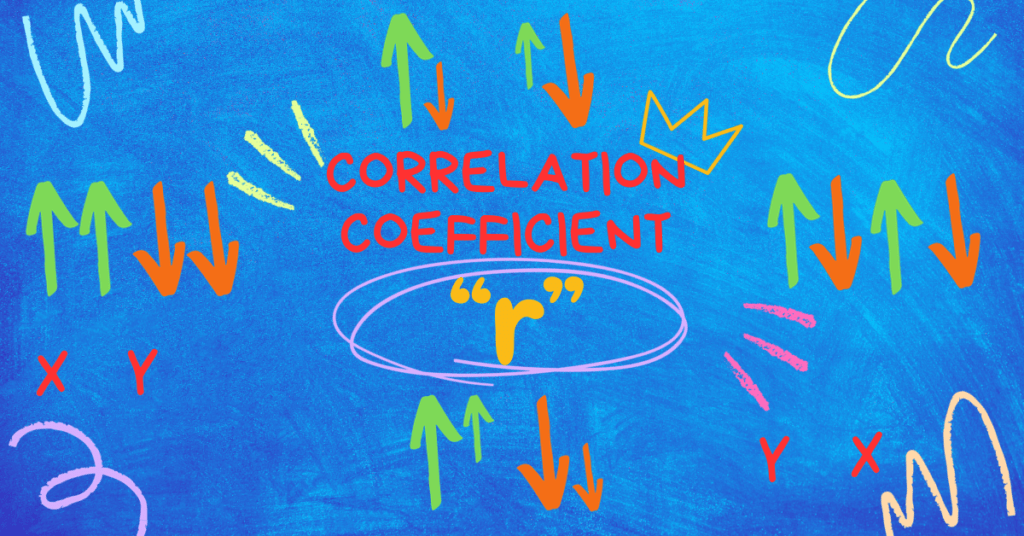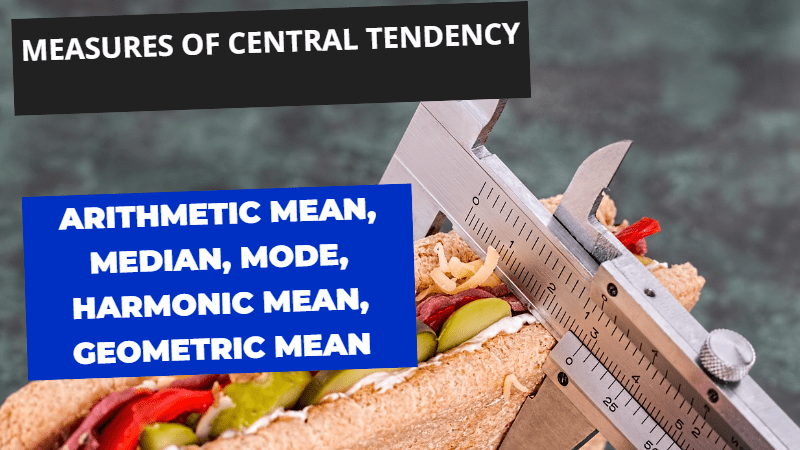In this Post, we are going to discuss the Paper of Business Statistics and Mathematics Solved Paper 2014, Punjab University, BCOM, ADCI in which Measures of Central Tendency, Measures of Dispersion, Correlation & Regression, Index Numbers, Matrix, Arithmetic Progression, Geometric Progression, Simultaneous Linear Equations, Annuity, Quadratic Equation is discussed and solved.
Other solved papers of Business Statistics & Mathematics
- Solved Paper 2007 Punjab University
- Solved Paper 2008
- Solved Paper 2009
- Solved Paper 2010
- Solved Paper 2011
- Solved Paper 2012
- Solved Paper 2013
Solved by Iftikhar Ali, M.Sc Economics, MCOM Finance Lecturer Statistics, Finance and Accounting
Table of Contents
Business Statistics and Mathematics Solved Paper 2014, Punjab University, BCOM, ADC I
Section I Business Statistics
Q.1 Calculate Arithmetic Mean, Median and Coefficient of Variation.
| Weekly Wages Rs. | No of Workers | Weekly Wages Rs. | No of Workers |
| 0-40 | 6 | 160-200 | 45 |
| 40-80 | 15 | 200-240 | 27 |
| 80-120 | 22 | 240-280 | 13 |
| 120-160 | 30 | 280-320 | 6 |
Solution:
| Classes | Frequency (f) | X | fx | fx² | C.f |
| 0—40 | 6 | 20 | 120 | 2400 | 6 |
| 40—80 | 15 | 60 | 900 | 54000 | 21 |
| 80—120 | 22 | 100 | 2200 | 220000 | 43 |
| 120—160 | 30 | 140 | 4200 | 588000 | 73 |
| 160—200 | 45 | 180 | 8100 | 1458000 | 118 |
| 200—240 | 27 | 220 | 5940 | 1306800 | 145 |
| 240—280 | 13 | 260 | 3380 | 878800 | 158 |
| 280—320 | 6 | 300 | 1800 | 540000 | 164 |
| Sum | 164 | 26640 | 5048000 | ||
| ∑f= | ∑fx= | ∑fx²= |
![]()
![]()
82 falls in C.F of 118 So L = 160, f= 45, n/2 = 82, h = 40, C = 73
![]()
![]()
![]()
![]()
![Rendered by QuickLaTeX.com \[ \mathbf{S.D =}\sqrt{\left\lbrack \frac{\mathbf{\sum f}\mathbf{x}^{\mathbf{2}}}{\mathbf{\sum f}}\mathbf{- \ }\left( \frac{\mathbf{\sum fx}}{\mathbf{\sum f}} \right)^{\mathbf{2}} \right\rbrack}\ \]](https://bcfeducation.com/wp-content/ql-cache/quicklatex.com-1b7ad8612d02ef61db16223c5aa106ef_l3.png)
![Rendered by QuickLaTeX.com \[ \mathbf{S.D =}\sqrt{\left\lbrack \frac{\mathbf{5048000}}{\mathbf{164}}\mathbf{- \ }\left( \frac{\mathbf{26640}}{\mathbf{164}} \right)^{\mathbf{2}} \right\rbrack}\ \]](https://bcfeducation.com/wp-content/ql-cache/quicklatex.com-aa999204809e783702fc9d07ffe93c61_l3.png)
![]()
![]()
![]()
Q.2
X: 05, 06, 07, 08, 09, 10, 11, 12, 13, 14, 15
Y: 09, 07, 10, 03, 13, 11, 14, 10, 14, 12, 18
Required: Calculate Co-efficient of correlation and also the line of regression y on x.
Solution: Correlation Coefficient
Formula
![]()
| S/No | X | Y | XY | X² | Y² |
| 1 | 5 | 9 | 45 | 25 | 81 |
| 2 | 6 | 7 | 42 | 36 | 49 |
| 3 | 7 | 10 | 70 | 49 | 100 |
| 4 | 8 | 3 | 24 | 64 | 9 |
| 5 | 9 | 13 | 117 | 81 | 169 |
| 6 | 10 | 11 | 110 | 100 | 121 |
| 7 | 11 | 14 | 154 | 121 | 196 |
| 8 | 12 | 10 | 120 | 144 | 100 |
| 9 | 13 | 14 | 182 | 169 | 196 |
| 10 | 14 | 12 | 168 | 196 | 144 |
| 11 | 15 | 18 | 270 | 225 | 324 |
| SUM | 110 | 121 | 1302 | 1210 | 1489 |
| ∑X = | ∑Y = | ∑XY = | ∑X² = | ∑Y² = |
![]()
![Rendered by QuickLaTeX.com \[ \mathbf{Sx =}\sqrt{\left\lbrack \frac{\mathbf{\sum}\mathbf{x}^{\mathbf{2}}}{\mathbf{n}}\mathbf{- \ }\left( \frac{\mathbf{\sum x}}{\mathbf{n}} \right)^{\mathbf{2}} \right\rbrack}\ \]](https://bcfeducation.com/wp-content/ql-cache/quicklatex.com-a30da9c9f948eeb1b01e9c570de2e21b_l3.png)
![]()
![]()
![]()
![]()
![Rendered by QuickLaTeX.com \[ \mathbf{Sy =}\sqrt{\left\lbrack \frac{\mathbf{\sum}\mathbf{y}^{\mathbf{2}}}{\mathbf{n}}\mathbf{- \ }\left( \frac{\mathbf{\sum y}}{\mathbf{n}} \right)^{\mathbf{2}} \right\rbrack}\ \]](https://bcfeducation.com/wp-content/ql-cache/quicklatex.com-ee6428ecbdeb066388381b8e5b681f49_l3.png)
![]()
![]()
![]()
![]()
![]()
![]()
![]()
![]()
![]()
Line of Regression Y on X
![]()
Where:
![]()
![]()
![]()
![]()
![]()
![]()
Q.3. Calculate Price Index Numbers using Laspeyre’s, Paasche’s, Fisher’s and Marshall’s formulae for 2001 taking 2000 as base year from the following data:
| Commodity | 2000 | 2001 | ||
| Price | Quantity | Price | Quantity | |
| Wheat | 30 | 110 | 32 | 112 |
| Rice | 40 | 100 | 38 | 110 |
| Jawar | 25 | 50 | 22 | 80 |
| Maize | 10 | 40 | 15 | 50 |
Solution:
| Commodity | 2000 | 2001 | Poqo | P1q1 | P1qo | Poq1 | ||
| Price Po | Quantity qo | Price P1 | Quantity q1 | 3300 | 3584 | 3520 | 3360 | |
| Wheat | 30 | 110 | 32 | 112 | 4000 | 4180 | 3800 | 4400 |
| Rice | 40 | 100 | 38 | 110 | 1250 | 1760 | 1100 | 2000 |
| Jawar | 25 | 50 | 22 | 80 | 400 | 750 | 600 | 500 |
| Maize | 10 | 40 | 15 | 50 | 8950 | 10274 | 9020 | 10260 |
| 3300 | 3584 | 3520 | 3360 | |||||
| ∑ Poqo= | ∑ P1q1= | ∑P1q0= | ∑ Poq1= | |||||
![]()
![]()
![]()
![]()
![]()
![]()
![]()
![]()
![]()
![]()
![]()
Q.4. Test the hypothesis that hair color and eye color are independent. The table value of Chi-square at 4 degree of freedom at 5% level of significance is 9.49.
| Eye Colour | Hair Colour | |||
| Light Black | Dark Black | Brown | Total | |
| Blue | 26 | 21 | 13 | 60 |
| Black | 25 | 42 | 21 | 88 |
| Brown | 19 | 18 | 15 | 52 |
| Total | 70 | 81 | 49 | 200 |
Solution
(i) Testing the Hypothesis
Ho: There is no Association between Attributes Eyes Colour and Hair Colour.
H1: There is Association between Attributes Eyes Colour and Hair Colour.
(ii) Level of Significance = α=0.05
(iii) Test Statistics is:
![]()
(iv) To find χ² first calculate expected frequencies fe:
Calculation of expected frequencies (fe)
| Attributes | Attributes | ||||
| Light Black | Dark Black | Brown | Total | ||
| Blue | | | | 60 | |
| Black | | | | 88 | |
| Brown | | | | 52 | |
| Total | 70 | 81 | 49 | 200 | |
(v) Calculation of χ²:
Table B. Computation of χ²
| fo | fe | fo-fe | (fo-fe)² | |
| 26 | 21 | 5 | 25 | 1.190 |
| 21 | 24.3 | -3.3 | 10.89 | 0.448 |
| 13 | 14.7 | -1.7 | 2.89 | 0.197 |
| 25 | 30.8 | -5.8 | 33.64 | 1.092 |
| 42 | 35.64 | 6.36 | 40.4496 | 1.135 |
| 21 | 21.56 | -0.56 | 0.3136 | 0.015 |
| 19 | 18.2 | 0.8 | 0.64 | 0.035 |
| 18 | 21.06 | -3.06 | 9.3636 | 0.445 |
| 15 | 12.74 | 2.26 | 5.1076 | 0.401 |
| 4.958 | ||||
|
(vi) Critical Region: Degree of Freedom d.f= (R-1)(C-1)
So d.f= (3-1)(3-1)=4
The Value of Tabulated χ²(0.05,4)=9.49
The Critical Region χ²cal>9.49
(vii) Conclusion: The calculated value of χ² is 4.958 is less than the tabulated value of χ² 9.49 or 4.958 falls in the acceptance region. We accept the Null Hypothesis Ho that there is no association between Eyes Colour and Hair Colour.
Section II Business Mathematics
Q.5 Calculate (i) (A+B), (ii) 2A – 3B (iii) AB from the following matrix A and B
![Rendered by QuickLaTeX.com \[ \textbf{Q.5} If\ A = \begin{bmatrix}2 & - 3 & 4 \\1 & 5 & - 2 \\4 & 2 & 6 \\\end{bmatrix},\ B = \begin{bmatrix}1 & - 2 & 3 \\4 & - 5 & - 6 \\7 & 8 & 9 \\\end{bmatrix}\ Calculate\ (i)A + B\ (ii)2A - 3B\ (iii)AB\ \]](https://bcfeducation.com/wp-content/ql-cache/quicklatex.com-ddc48b799981edd2b0fc0badeb88433b_l3.png)
Solution
![Rendered by QuickLaTeX.com \[ \begin{enumerate}\def\labelenumi{(\roman{enumi})}\item A + B = \ \begin{bmatrix}2 + 1 & - 3 + ( - 2) & 4 + 3 \\1 + 4 & 5 + ( - 5) & - 2 + ( - 6) \\4 + 7 & 2 + 8 &6 + 9 \\\end{bmatrix}\ \]](https://bcfeducation.com/wp-content/ql-cache/quicklatex.com-62aff876fec15bc6e07b78ede63fab01_l3.png)
![Rendered by QuickLaTeX.com \[ A + B = \ \begin{bmatrix}3 & - 5 & 7 \\5 & 0 & - 8 \\11 & 10 & 15 \\\end{bmatrix}\ \]](https://bcfeducation.com/wp-content/ql-cache/quicklatex.com-f40531e0c2b45a6d3c1562a5378c186c_l3.png)
![Rendered by QuickLaTeX.com \[ \begin{enumerate}\def\labelenumi{(\roman{enumi})}\setcounter{enumi}{1}\item 2A = \ \begin{bmatrix}4 & - 6 & 8 \\2 & 10 & - 4 \\8 & 4 & 12 \\\end{bmatrix} 3B = \ \begin{bmatrix}3 & - 6 & 9 \\12 & - 15 & - 18 \\21 & 24 & 27 \\\end{bmatrix}\ \]](https://bcfeducation.com/wp-content/ql-cache/quicklatex.com-292dfd07b94745ab71451c4a5d8aaa33_l3.png)
![Rendered by QuickLaTeX.com \[ 2A - 3B = \ \begin{bmatrix}4 - 3 & - 6 - ( - 6) & 8 - 9 \\2 - 12 & 10 - ( - 15) & - 4 - ( - 18) \\8 - 21 & 4 - 24 & 12 - 27 \\\end{bmatrix}\ \]](https://bcfeducation.com/wp-content/ql-cache/quicklatex.com-68953a30c4bdbfa12212ef30ea0ac8e8_l3.png)
![Rendered by QuickLaTeX.com \[ 2A - 3B = \ \begin{bmatrix}1 & 0 & - 1 \\10 & 25 & 14 \\13 & - 20 & - 15 \\\end{bmatrix}\ \]](https://bcfeducation.com/wp-content/ql-cache/quicklatex.com-5efef03c547584482a8d7af23473db28_l3.png)
![Rendered by QuickLaTeX.com \[ (iii) AB = \ \begin{bmatrix}2 \times 1 + ( - 3)4 + 4 \times 7 & 2( - 2) + ( - 3)( - 5) + 4 \times 8 & 2 \times 3 + ( - 3) - 6 + 4 \times 9 \\1 \times 1 + 5 \times 4 + ( - 2) \times 7 & 1( - 2) + 5( - 5) + ( - 2) \times 8 & 1 \times 3 + 5( - 6) + ( - 2)9 \\4 \times 1 + 2 \times 4 + 6 \times 7 & 4( - 2) + 2( - 5) + 6 \times 8 & 4 \times 3 + 2( - 6) +6 \times 9 \\\end{bmatrix}\ \]](https://bcfeducation.com/wp-content/ql-cache/quicklatex.com-8a9506e076cbd6bcd27ba23fef0da76f_l3.png)
![Rendered by QuickLaTeX.com \[ AB = \ \begin{bmatrix}2 - 12 + 28 & - 4 + 15 + 32 & 6 + 18 + 36 \\1 + 20 - 14 & - 2 - 25 - 16 & 3 - 30 - 18 \\4 + 8 + 42 & - 8 - 10 + 48 & 12 - 12 + 54 \\\end{bmatrix}\ \]](https://bcfeducation.com/wp-content/ql-cache/quicklatex.com-2cb8b3bea410f433fcc7f8a48fba3af1_l3.png)
![Rendered by QuickLaTeX.com \[ AB = \ \begin{bmatrix}18 & 43 & 60 \\7 & - 43 & - 45 \\54 & 30 & 54 \\\end{bmatrix}\ \]](https://bcfeducation.com/wp-content/ql-cache/quicklatex.com-f62ccb15f35bba334cd120ad87fd608c_l3.png)
Q.6 (a) Solve the following quadratic equation: 2x² + 15x + 18 = 0
Solution (a)
![]()
![]()
![]()
![]()
![]()
![]()
![]()
![]()
![]()
(b) The difference of two numbers is 33. The larger number is one more than three times the smaller number. Find the numbers.
Solution (b)
Let the smaller number be x
Larger number is one more than 3 times the smaller number = 3x+1
Equation will be:
(3x + 1) – x = 33
3x + 1 – x = 33
2x + 1 = 33
2x = 33 – 1
2x = 32
X=32/2
X= 16
Hence
Smaller Number = x = 16
Larger Number = 3x + 1 = 3(16) + 1 = 49
Prove
3x + 1 – x = 33
49 – 16 = 33
33 = 33
Q.7 (a) The sum of 10 terms of an A.P; whose last term is 28, is 145. Find the first term and the common difference.
Solution:
![]()
![]()
![]()
![]()
![]()
![]()
![]()
![]()
![]()
![]()
![]()
![]()
![]()
![]()
![]()
![]()
![]()
(b) Find the sum of the series: 1, 1/2, 1/4, 1/8, 1/16,……….to infinity cannot exceed 2.
Solution:
![]()
![]()
![]()
![]()
![]()
![]()
Q.8 Find out the effective rate of interest equivalent to the nominal rate of 8% p.a. Compounded quarterly.
Solution:
Quarterly Case
![]()
![]()
![]()
![]()
![]()
You may also interested in the following:
Business Statistics and Mathematics Solved Paper 2013, Punjab University, BCOM, ADC I
Business Statistics and Mathematics Solved Paper 2012, Punjab University, BCOM,ADC I
Business Statistics & Mathematics, Solved Paper 2011, Punjab University, BCOM,ADCI
Business Statistics & Mathematics, Solved Paper 2010, Punjab University, BCOM, ADCI
Business Statistics & Mathematics, Solved Paper 2009, Punjab University, BCOM, ADCI
Business Mathematics and Statistics, Solved Paper 2008, Punjab University, BCOM,ADCI
Business Mathematics and Statistics, Solved Paper 2007, Punjab University, BCOM,ADCI
Introduction to Statistics Basic Important Concepts
Measures of Central Tendency, Arithmetic Mean, Median, Mode, Harmonic, Geometric Mean
Correlation Coefficient, Properties, Types, Important Formulas for Correlation Coefficient






